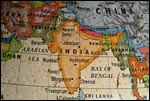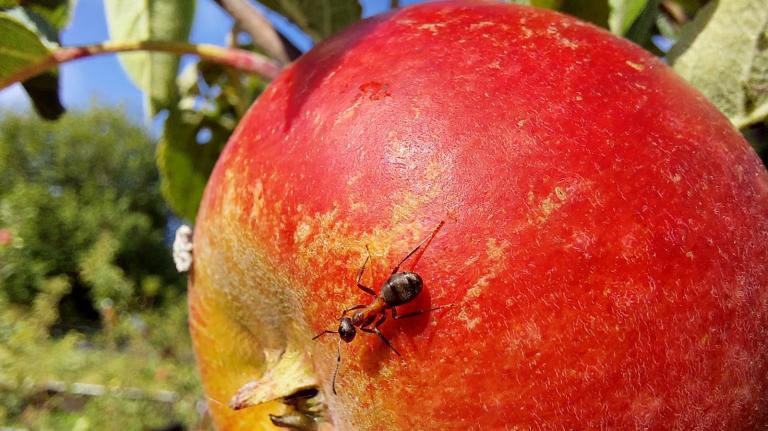India’s current burst of free-market reform and official attempts at “modernization” are by no means the area’s first.

As Mike Davis shows in his luminous Late Victorian Holocausts (2001), the subcontinent’s 19th century British rulers imposed an economic agenda literally ripped wholesale from the pages of Adam Smith’s Wealth of Nations (1776), that bible of free-market dogmatists.
Davis lays out in devastating detail (first chapter available for free here) how in the 1870s, high-living colonial administrators dismantled the old Indian system for handling droughts, replacing it with one in which the price of grain floated freely based on global supply and demand. Thus, when a drought struck a grain-producing region in India, the grain price surged. The only buyers who could then afford it happened to reside in merry olde England.
The subcontinent’s railroad system, paid for by taxes imposed on the Indians, very efficiently carried grain being produced in the non-drought areas to ports for shipment to the mother country. Its cutting-edge telegraph infrastructure, also financed by colonial taxes, transmitted price hikes rapidly. Famine thus rippled throughout India, including in non-drought-stricken areas.
Tens of millions perished in a series of famines in late 19th century India; before, when drought struck a certain area, food would move in from luckier areas and famines were rare. Davis claims the English took advantage of these not-so-natural disasters to consolidate its grip on the subcontinent. It was all very efficient, really.
Today in India, modernization is bringing new food-related woes: growing despair among farmers and surging diabetes rates.
While India’s high-tech centers boom, its rural areas confront a grave situation. A recent New York Times piece puts it this way:
Changes brought on by 15 years of economic reforms have opened Indian farmers to global competition and given them access to expensive and promising biotechnology, but not necessarily opened the way to higher prices, bank loans, irrigation or insurance against pests and rain.
That “promising biotechnology” is Monsanto’s Bt cotton seed, genetically modified to ward off the cotton bollworm. Indian farmers have been desperate to get their hands on it because they think they need it to compete with their lavishly capitalized and subsidized U.S. peers.
But the Monsanto seed, which promises to enable farmers to use 25 percent less pesticide, might not be worth the premium (it goes for about twice as much as conventional seed, the Times reports). The great Indian journalist P. Sainath wrote recently that “despite all the claims made for [Bt cotton], input dealers here have seen no decline in pesticide sales as a result of its use. Some claim higher sales than before.”
As prices for seeds and other inputs rise, farmers have seen the price their goods fetch in the marketplace fall or stagnate. The result has been crushing debt burdens, mounting losses, and a stunning surge in suicides among farmers.
The Times reports that “17,107 farmers committed suicide in 2003, the most recent year for which government figures are available. Anecdotal reports suggest that the high rates are continuing.”
Well, that’s one way to clear the land of “inefficient” farmers.
The above-linked Times piece as well as Sainath’s are pungent chronicles of what it’s like to farm in a laissez-faire market dominated by gigantic input dealers and buyers.
Farmers live with nearly unbearable risk: you invest time and money to plant a field, and pray that weather, pests, bad seeds, soil disease, or God knows what other menace doesn’t prevent a marketable crop from emerging. “Every year is a gamble,” one Indian farmer told the Times. Amen.
Societies that are content to let farmers bear that risk alone gamble with their food supplies, sure that someone, somewhere will produce sufficient food. Such societies treat agriculture essentially as a low-value commodity enterprise best done by low-wage workers elsewhere.
As the agricultural economist Darryl Ray has shown (PDF), the U.S., despite its absurd and costly subsidy system, is the model par excellence of such an attitude. Its $15 billion-$20 billion annual subsidy payout serves as a band-aid over a hemorrhaging farm economy. These subsidies are really a sop to the agribiz giants that buy farm goods and sell farm inputs — they don’t do much for farmers themselves, who face steadily declining prices even as their input prices rise.
Pro-market observers will murmur that it’s a shame about all those suicides in India, but that the rural situation there merely reflects the natural course of modernization, which is what people everywhere want. The deaths are merely the “birth pangs of a new order,” to borrow Condoleeza Rice’s assessment of Israel’s assault on Lebanon.
In reality, however, the Indian voting public issued a stinging rebuke to the nation’s farm policies two years ago, toppling the government and bringing into power current prime minister Manmohan Singh, who promised to do better by farmers. So far, however, Singh has failed to deliver, and the Times reports that he, too, is facing public anger over farmers’ plight.
Meanwhile, as the government throws farmers to the wolves and facilitates the industrialization of the food supply, India is being riddled by surging diabetes rates.
Here is the Times:
Though 70 percent of the population remains rural, Indians are steadily forsaking paddy fields for a city lifestyle that entails less movement, more fattening foods and higher stress: a toxic brew for diabetes. In Chennai, about 16 percent of adults are thought to have the disease, one of India’s highest concentrations, more than the soaring levels in New York, and triple the rate two decades ago. Three local hospitals, quaintly known as the sugar hospitals, are devoted to the illness.
If present trends continue, the Times reports, the number of diabetes cases will more than double over the next 20 years. “Diabetes unfortunately is the price you pay for progress,” one Indian doctor tells the newspaper.
But there are other benchmarks for progress besides GDP rates or stock-exchange averages. Is your farm economy robust, or dismal? Is the food supply making people healthy, or sick? What’s it doing to the environment? Are your regional cuisines flourishing, or being homogenized into oblivion?
Indian citizens flatly rejected the government’s neoliberal ag agenda in 2004. May they continue to do so — and may the nation’s leaders heed them.


